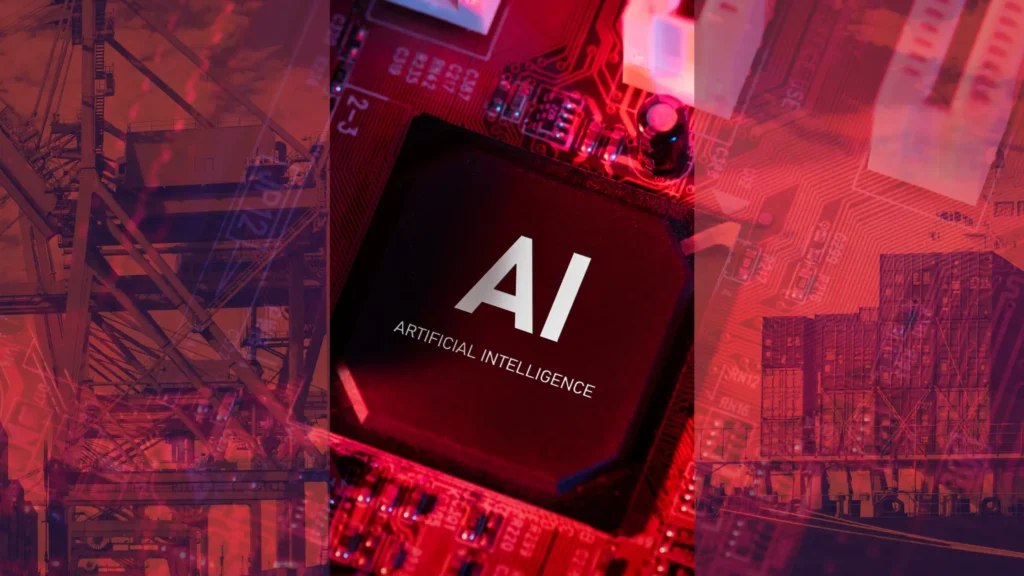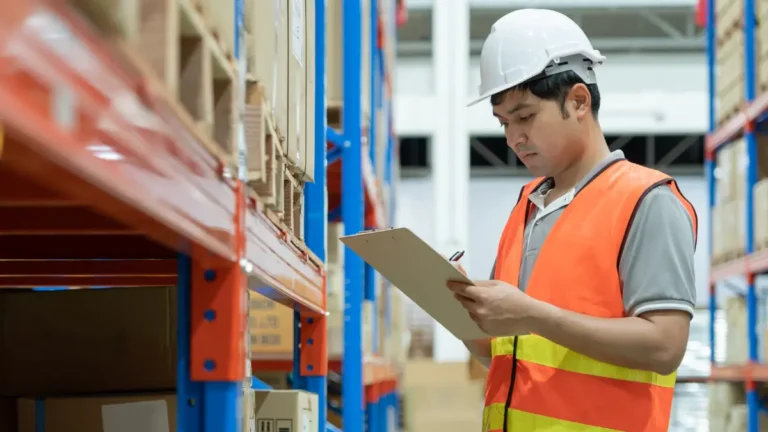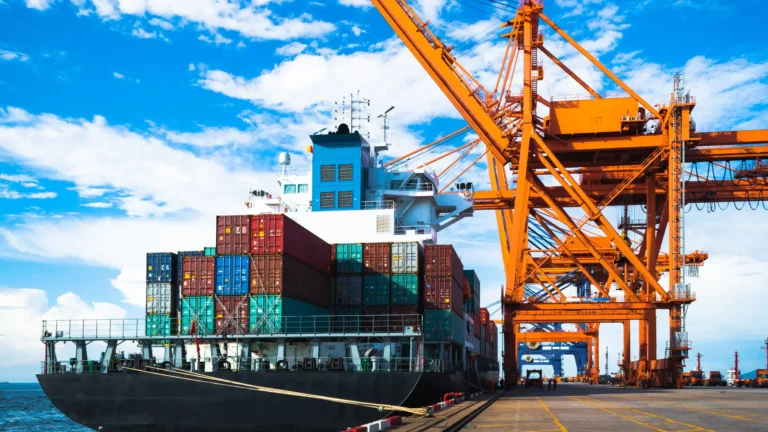In today’s hyper-competitive and unpredictable global economy, supply chains are being redefined by Artificial Intelligence (AI) and Machine Learning (ML). These technologies are no longer optional—they’re foundational to staying efficient, agile, and resilient.
By integrating AI and ML into supply chain management, companies can automate complex decision-making, generate highly accurate demand forecasts, and uncover real-time optimization opportunities. Whether it’s predicting inventory needs, routing deliveries more efficiently, or detecting risks before they escalate—AI and ML are the strategic edge modern supply chains need.

Firms leveraging machine learning in supply chain optimization are seeing measurable gains: reduced costs, faster delivery times, and smarter, data-driven workflows that adapt as conditions change. In an environment where every percentage point matters, AI/ML aren’t just tools—they’re business survival strategies.
In this guide, we’ll break down exactly how AI and machine learning are transforming supply chain optimization—beyond the buzzwords. You’ll discover real-world use cases from companies like Amazon, UPS, and Walmart, explore the tangible benefits these technologies deliver, and understand the practical challenges of implementation. Whether you’re a supply chain professional, analyst, or just curious about AI/ML’s impact on operations, this post is packed with actionable insights, case studies, and career relevance.
What Is Machine Learning in the Supply Chain?
Machine Learning (ML) is a branch of Artificial Intelligence (AI) that allows systems to learn from data, recognize patterns, and make decisions—without being explicitly programmed for every scenario. In the context of supply chain management, ML is not just a buzzword—it’s a powerful enabler of real-time optimization and predictive insights.
Here’s how machine learning is actively used across supply chain functions:
- Demand Forecasting: ML models analyze historical data, seasonality, promotions, and external signals (like weather or social media trends) to predict future demand with high precision.
- Inventory Optimization: Algorithms help determine when and how much to reorder, minimizing stockouts and overstocking.
- Supplier Performance Monitoring: ML tracks vendor delivery timelines, quality scores, and pricing trends to flag risks and optimize sourcing decisions.
- Predictive Maintenance: By analyzing sensor data, ML identifies potential equipment failures before they happen—avoiding costly downtimes.
- Logistics & Route Optimization: ML-powered systems adjust routes in real-time using traffic, weather, and package data to improve on-time delivery and reduce fuel consumption.
In short, ML gives supply chain professionals a massive edge by automating complex decision-making across thousands of variables—at scale and in real time.
Key Applications of Machine Learning in Supply Chain Management
Machine Learning is no longer a future ambition—it’s actively reshaping how modern supply chains operate. Let’s break down the most impactful areas where ML is making a real difference:
1. Demand Forecasting
Traditional demand forecasting often fails when market dynamics shift—think pandemics, economic swings, or seasonal fads. Machine Learning brings agility.
It analyzes vast data sources—real-time sales trends, weather patterns, social sentiment, historical purchase behavior, and even competitor pricing—to deliver far more accurate forecasts.
Example – Amazon:
Amazon’s ML-powered demand forecasting system doesn’t just look at historical sales. It tracks browsing behavior, regional holidays, local weather, and promotional events to anticipate what consumers will want—before they even click “Add to Cart.”
This real-time, hyper-localized forecasting allows Amazon to optimize warehouse stocking levels across 110+ fulfillment centers in the U.S. alone, ensuring high availability and lightning-fast delivery, while minimizing costly overstock.
Explore: Planning and Demand Forecasting in Supply Chain Analytics
2. Inventory Optimization
Stocking too much? You’re burning money. Too little? You’re losing revenue. ML finds the sweet spot.
By continuously learning from demand variability, supplier lead times, promotions, and seasonality, ML suggests just-in-time reordering strategies.
Explore: Inventory Optimization in Supply Chain
Case Study – Walmart:
Walmart leverages machine learning to power its real-time inventory management system.
Here’s how it works:
- Store-level sales data flows continuously into ML models.
- These models predict inventory depletion and trigger auto-replenishment orders.
- The system adjusts reorder quantities dynamically based on current events (e.g., a storm warning spikes demand for essentials).
The result?
- 25% reduction in excess inventory
- Lower working capital locked in stock
- Increased shelf availability, which directly improves customer satisfaction.
3. Route and Logistics Optimization
Manual route planning is inefficient and reactive. ML-powered logistics platforms use live data—traffic congestion, weather alerts, fuel prices, and vehicle health—to dynamically optimize delivery routes in real time.
Real-World Example – UPS ORION:
UPS’s ORION (On-Road Integrated Optimization and Navigation) system is one of the most sophisticated AI+ML logistics tools in the world.
- It analyzes 200+ data points per delivery, per driver.
- Adjusts routes on the fly to avoid traffic and reduce fuel use.
- Uses deep learning to simulate “what-if” delivery scenarios at scale.
ROI:
UPS estimates ORION saves 10 million gallons of fuel and 100 million miles driven annually—translating to over $400 million in cost savings.
4. Supplier Risk Scoring
In an interconnected global supply chain, a delay in Vietnam can impact deliveries in Chicago. ML helps monitor supplier behavior at scale.
Real World – Unilever:
Unilever uses ML-based supplier performance monitoring tools that evaluate:
- Historical lead time variances
- Order fill rates
- Pricing volatility
- Compliance with ESG standards
When a supplier’s performance starts to dip, the system flags risk, triggering corrective action or contingency sourcing.
In 2023, Unilever avoided a major production bottleneck by switching suppliers 3 weeks ahead of a predicted delay—something their older systems would’ve caught too late.
5. Predictive Maintenance
Instead of waiting for machines to fail (and then scrambling), predictive maintenance uses IoT + ML to preemptively schedule service based on actual wear-and-tear data.
Case Study – Siemens Smart Factories:
Siemens uses ML to monitor thousands of data points from motors, compressors, and production lines.
- Vibration frequency, temperature, humidity, and voltage data feed into ML models.
- Algorithms learn to detect micro-patterns that indicate early signs of failure.
- Maintenance is scheduled before a breakdown happens.
Impact:
- 30% reduction in unplanned downtime
- 12% increase in equipment lifespan
- Millions saved annually on emergency repairs and lost production hours.
Benefits of AI and Machine Learning in Supply Chain Optimization
As supply chains become more global and complex, AI and ML technologies are helping organizations stay competitive by driving efficiency, reducing risk, and improving decision-making. Here are the key advantages:
Reduced Inventory Costs
By accurately forecasting demand and optimizing reorder points, AI and ML help minimize both overstocking and stockouts. This reduces holding costs and improves working capital utilization across the supply chain.
Faster and More Reliable Logistics
Machine learning models can optimize delivery routes and adapt in real time to traffic, fuel prices, and delivery constraints. This leads to faster shipping times and more efficient last-mile operations.
Improved Disruption Management
AI can analyze a range of data sources to detect early warning signs of disruption—such as delays, supplier risk, or demand shifts—enabling teams to act proactively and mitigate impact.
Greater Supply Chain Visibility
Advanced AI platforms can consolidate data from multiple systems (ERP, TMS, WMS, IoT) to offer real-time visibility across sourcing, manufacturing, warehousing, and transportation.
Automation of Routine Tasks
From demand forecasting and order processing to invoice matching and returns handling, AI automates repetitive supply chain functions. This frees up human resources for more strategic decision-making and innovation.
Challenges of Implementing AI and Machine Learning in Supply Chains
While the advantages of AI and ML in supply chain optimization are significant, their implementation isn’t without hurdles. Below are some of the most common challenges businesses face:
1. Data Quality and Availability
Machine Learning thrives on clean, structured, and high-volume data. In reality, many supply chains still rely on siloed or inconsistent data sets. Without reliable data, even the most advanced AI models can produce poor insights or flawed predictions.
2. High Initial Investment
Deploying AI solutions requires more than just software. Costs include data infrastructure upgrades, sensor installations (for IoT-based applications), cloud computing, and skilled personnel. For small and mid-sized businesses, these upfront expenses can be a major barrier to adoption.
3. Legacy System Compatibility
Many supply chain organizations still use legacy ERP and planning systems that aren’t designed to integrate with AI platforms. Transitioning to AI-ready systems often involves time-consuming custom development or a complete tech overhaul.
4. Talent Gap
Implementing and scaling AI/ML requires a hybrid skill set — part data science, part supply chain expertise. These professionals are in high demand and short supply, making it difficult for companies to recruit or train the right talent quickly.
5. Change Management Resistance
Even with the right tools in place, internal resistance from employees who are unfamiliar with AI or fear automation can slow down progress. Successful adoption requires cultural shifts, reskilling programs, and strong leadership buy-in.
The Future of AI and Machine Learning in Supply Chain Optimization
The role of AI and Machine Learning in supply chain management is just beginning to unfold. As these technologies mature, their applications will expand far beyond current use cases — reshaping the way global supply networks operate.
1. Autonomous Supply Chain Operations
Emerging innovations like AI-powered warehouses, robotic picking systems, and autonomous delivery vehicles will reduce the need for manual intervention. These smart systems will self-adjust in real-time, improving throughput while minimizing human error.
2. Advanced Predictive Capabilities
With the help of ML models that can analyze vast streams of structured and unstructured data, future supply chains will become increasingly proactive. Instead of reacting to disruptions, organizations will be able to predict and prepare for them — from supplier delays to geopolitical events or climate-related risks.
3. Enhanced Supply Chain Resilience
AI will play a pivotal role in strengthening supply chain resilience. Through intelligent scenario planning, companies can run simulations to evaluate alternative sourcing strategies, route plans, or inventory buffers before a disruption occurs.
4. AI + Human Collaboration
The future won’t replace humans — it will enhance them. Expect AI tools to act as decision-making partners, offering supply chain professionals real-time insights, prescriptive recommendations, and alerts that help optimize outcomes while still keeping human judgment in the loop.
5. Sustainability and Circular Supply Chains
AI will also support more sustainable practices by optimizing transportation routes, reducing waste, and tracking carbon emissions. Companies focused on ESG (Environmental, Social, and Governance) goals will increasingly lean on AI to drive greener, more transparent operations.
Conclusion
AI and Machine Learning are no longer optional add-ons — they are reshaping how modern supply chains function. From improving demand forecasts and fine-tuning inventory levels to streamlining logistics and mitigating risks, these technologies are helping organizations build faster, smarter, and more resilient operations.
While implementation can be challenging—due to data quality, high upfront investment, and integration hurdles—the long-term payoff is significant. Businesses that embrace AI and ML stand to gain a competitive edge through cost savings, agility, and enhanced decision-making.
If you’re exploring ways to modernize your supply chain strategy, adopting AI and ML isn’t just a trend — it’s a necessity.






